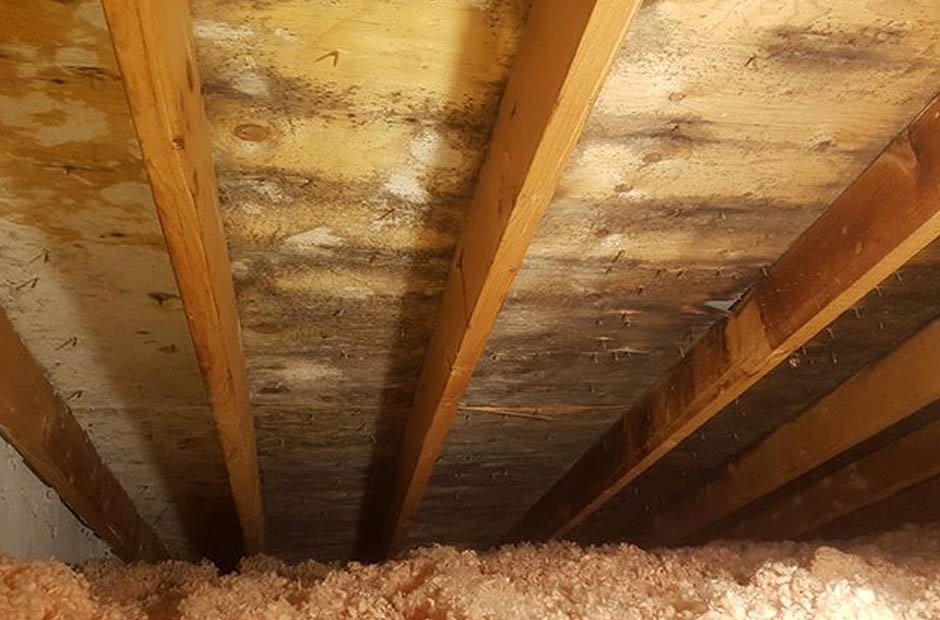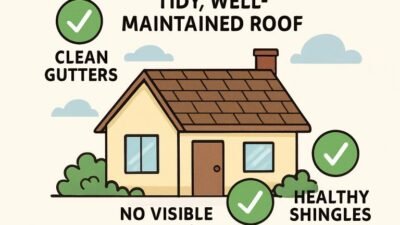Key Takeaways:
- Mold in attics can severely impact health and structural integrity.
- Proper mold removal requires expertise and professional equipment.
- Prevention is as crucial as removal in maintaining a mold-free environment.
- Understanding the signs of mold can help in early detection and remediation.
Why Attic Mold Is Dangerous
Mold growth in attics is not just an aesthetic issue; if left unchecked, it can pose serious health risks and structural problems. Mold spores can lead to allergic reactions, respiratory issues, and other health complications. Certain types of mold can even produce toxins that harm humans and pets. For instance, black mold, which is particularly notorious, can cause severe respiratory issues and even neurological problems in extreme cases.
The structural integrity of your home can also be compromised by mold. Mold feeds on organic materials such as wood and insulation, weakening these materials over time. This can damage the attic and other house parts, resulting in costly repairs. Therefore, professional services for mold removal Seattle can address these issues effectively and restore the safety and health of your home.
Common Signs of Attic Mold
- Musty odors emanating from the attic
- Visible mold growth on wooden beams or insulation
- Discoloration of attic materials
- Increased allergy symptoms among household members
Detecting mold early can save you from extensive damage and costly repairs. It’s essential to be vigilant about these signs. Musty odors, for instance, are often one of the first signs of mold presence. These odors can permeate other areas of your home, making it uncomfortable to live in. Although visible mold growth may seem minor at first, it can quickly spread and infest large areas of the attic, making it more difficult and expensive to eradicate.
Discoloration on attic materials like wood and insulation can indicate deeper mold issues. Sometimes, the mold is not visible on the surface but has spread underneath the materials, causing damage from the inside out. Increased allergy symptoms such as sneezing, coughing, and watery eyes among household members can also be a red flag. This is because mold spores in the air can trigger allergic reactions and exacerbate respiratory conditions like asthma. Attention to these signs can help in early detection and timely remediation of mold problems.
The Importance of Professional Mold Removal
While DIY mold removal might seem cost-effective, it often leads to incomplete remediation and recurring mold issues. Professionals use advanced equipment and methodologies that ensure thorough mold removal. They also follow safety protocols to protect themselves and the household. One of the critical advantages of professional mold removal is the rigorous inspection process. Professionals can identify hidden mold growths that you might overlook.
Moreover, professionals can accurately identify and mitigate the source of moisture, which is crucial in preventing mold from returning. Some note that only thorough removal and proper moisture control can fully address mold problems. Simply wiping away visible mold will only solve the problem if the underlying moisture issue is fixed. Professionals employ air quality testing, moisture mapping, and infrared scanning to pinpoint moisture sources and ensure comprehensive mold remediation.
Steps Involved in Professional Mold Removal
- Inspection:Professionals assess the extent of mold growth and identify the source of moisture.
- Containment:Areas with mold are contained to prevent spores from spreading.
- Filtration:High-efficiency particulate air (HEPA) vacuums and air scrubbers are used to remove mold spores.
- Removal:Contaminated materials are removed, and surfaces are cleaned using specialized products.
- Restoration:Damaged materials are repaired or replaced, and preventive measures are implemented.
These steps ensure that the mold is not only removed but also that future mold growth is prevented. The inspection phase is particularly critical as it helps understand the full extent of the mold problem. Professionals use moisture meters and thermal cameras to detect hidden mold and moisture issues.
Containment methods include using plastic sheeting and negative air pressure to isolate the mold-affected areas. This prevents mold spores from spreading to other parts of the house during removal. HEPA filtration helps capture tiny mold spores from the air, restoring indoor air quality to safe levels.
During removal, contaminated materials like drywall, insulation, and wooden beams might be removed if the mold deeply infests them. Surfaces are then treated with antimicrobial cleaners to kill any remaining mold spores. The restoration phase may involve repairing or replacing damaged materials and implementing measures like better ventilation and dehumidification to prevent future mold growth.
How to Prevent Attic Mold
- Maintain Proper Ventilation:Ensure your attic has adequate ventilation to reduce moisture buildup.
- Control Humidity:Use a dehumidifier to keep humidity levels low.
- Inspect Regularly:Regularly inspect your attic for any signs of water damage or mold growth.
- Repair Leaks Promptly:Address roof leaks or plumbing issues that could introduce moisture into your attic.
Prevention is critical in keeping your attic mold-free and your home healthy. Proper ventilation helps reduce moisture levels, which is essential in preventing mold growth. Ventilation can be enhanced by installing vents or exhaust fans in the attic. Controlling humidity is equally crucial; maintaining humidity below 60% can significantly reduce the likelihood of mold formation. Dehumidifiers can be particularly useful in damp climates or during periods of high humidity.
Regular inspections are vital to catch any early mold or water damage signs. Inspecting the attic during seasonal changes or after heavy rain can help identify issues before they escalate. Prompt repair of leaks, whether from the roof or plumbing, can prevent moisture from seeping into attic materials and create an environment conducive to mold growth. Implementing these preventive measures can save you from the hassle and expense of mold remediation in the future.



